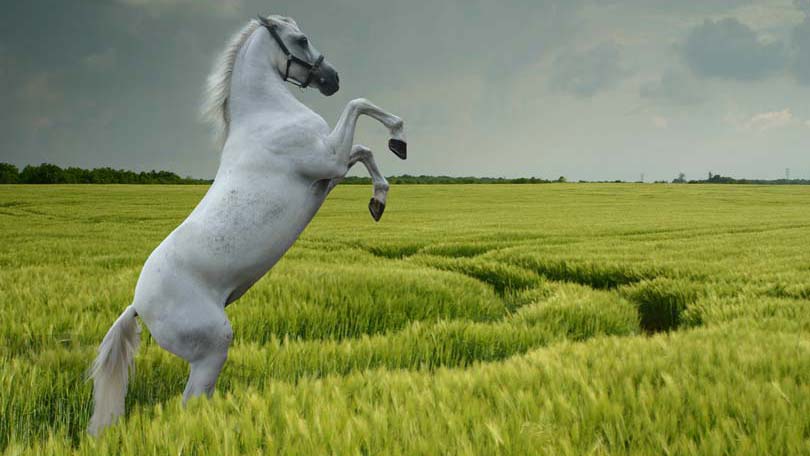
Encountering a horse that bucks is a common occurrence. Training the horse that bucks may be a challenge, but can be properly managed in a safe environment. Both horse and rider must put in extra effort and patience, but the outcome can be rewarding.
Horses buck for a variety of reasons. A horse that has been confined for a long period of time, or even one that just has excess energy will buck to relieve tension, boredom, and stress. A horse with energy to burn will play before taking work seriously, and this behavior should be understood, not punished. If your horse needs to vent before getting down to business, the fault is usually with the handler for not providing enough stimulation for the horse in the form of exercise. Lunging your horse before riding or working him will allow the horse time to release energy. This is a good way for the animal to get limber and play, without the rider having to tug and pull at the mouth in an effort to control or reprimand the animal. Why waste time and frustration on this when you can simply lunge the animal for ten minutes before riding?
When first training a horse to ride, bucking usually will come up at one point or another. When a girth is first placed around a horse, he will often buck. This will usually take place when the animal moves forward, especially at the lope or canter. If the girth is introduced slowly enough and the horse accepts it willing, they will usually not buck at the walk or trot. When first applying the girth, keep them on a lunge line in a round pen where you can try to control their gait. If you contain the horse at a trot for a while until he gets used to the pressure of the girth, the chances are good that he will not want to buck when moving into the canter. If the trainer takes the time to train the animal slowly and without instilling any fear into the horse, bucking can be avoided all together.
Horses that buck under saddle or sporadically may be responding to a variety of stimuli. Firstly, if the horse has been successful in throwing riders from bucking, he may have learned that this is a good way to get what he wants. Normally, this animal will need to be started all over, from scratch. He needs to learn to give in to pressure, starting with the bit and leg commands, and moving into the saddle. A professional trainer would be best suited for this task.
Bucking for no reason or out of nowhere usually means that the animal is in pain or has been frightened. If a horse is startled, especially from behind, they are responding instinctually by bucking or kicking out. A horse’s hindquarters are the most powerful, and are his first line of defense. Horses can spook at almost anything, so acclimating the horse to many different objects or circumstances can help desensitize the animal. Horses can also buck in response to pain. A horse will buck if the saddle is tight or pinchy, or if the girth is too tight. Girth sores and dirty pads can also irritate a horse, so be sure to check your equipment before tacking. A horse that bucks only at the canter, and is usually an amiable companion, should have his front ankles checked. Some horses relieve front ankle pain through bucking at the canter.
If all else fails, consult your local vet or trainer. Stress, injury, and ulcers can also cause a horse to misbehave by bucking, so have these things looked into if the problem persists.
